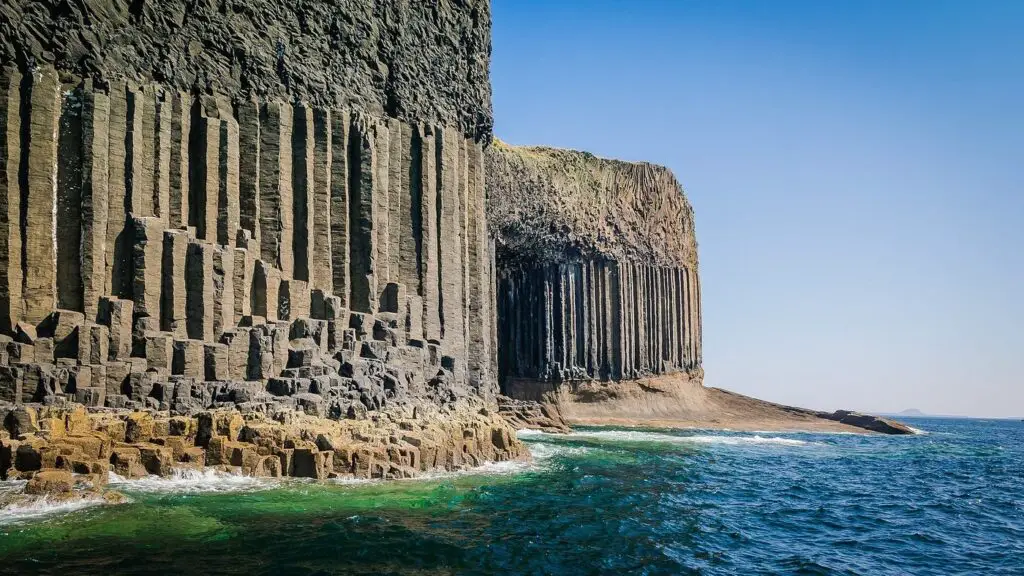Introduction
Tucked away on the uninhabited island of Staffa, in Scotland’s Inner Hebrides, lies one of nature’s most spectacular creations—Fingal’s Cave. This awe-inspiring geological formation is celebrated for its extraordinary structure of hexagonal basalt columns, formed millions of years ago from rapidly cooling volcanic lava. With a length of approximately 72 meters, Fingal’s Cave is not only a visual marvel but also an acoustic wonder, known for its cathedral-like soundscape. The cave’s enchanting beauty has inspired artists, musicians, and writers for centuries, making it a must-visit destination for travelers from around the globe.
The Geological Marvel of Fingal’s Cave
Fingal’s Cave is a true testament to the power and beauty of natural forces. The cave is made up of striking hexagonal basalt columns that were created when volcanic lava cooled and solidified at a rapid pace. These interlocking columns, some of which are over 12 meters (39 feet) high, form the cave’s walls and ceiling, giving it a symmetrical, almost otherworldly appearance. This geometric wonder has drawn comparisons to the iconic Giant’s Causeway in Northern Ireland, which shares a similar geological origin.

A Symphony of Natural Acoustics
What truly sets Fingal’s Cave apart is its remarkable acoustics. The cave’s unique structure creates a natural echo chamber, amplifying the sound of waves crashing against the basalt columns. Visitors often describe the experience as entering a natural cathedral, where the reverberating sounds evoke a sense of awe and tranquility. This acoustic phenomenon has inspired many, including the famous composer Felix Mendelssohn, who visited the cave in 1829 and was so moved by its ambiance that he composed the overture “Fingal’s Grotto” (also known as “The Hebrides”). The hauntingly beautiful music captures the cave’s mystical atmosphere and has cemented its place in cultural history.

A Source of Artistic Inspiration and Legend
Fingal’s Cave isn’t just a natural wonder; it’s also a place steeped in mythology and cultural significance. The cave is named after the legendary Irish hero Fingal, a giant warrior featured in the epic poems of the 18th-century Scottish poet James Macpherson. These poems, which Macpherson claimed were translations of ancient Gaelic folklore, captivated European audiences and contributed to the romanticization of the Scottish landscape. The cave has also been a muse for numerous artists and writers, who have drawn inspiration from its unique structure and mystical aura.

Conclusion
Fingal’s Cave on the island of Staffa is more than just a geological formation—it’s a symbol of the awe-inspiring beauty and mystery of nature. Its hexagonal basalt columns, cathedral-like acoustics, and rich cultural associations make it a destination that continues to captivate the imagination of all who visit. Whether you’re a lover of nature, history, or the arts, a visit to Fingal’s Cave offers an unforgettable experience that resonates with both the eyes and the ears.
This blog post is designed to engage readers with the intriguing blend of natural beauty, mythology, and artistic inspiration that defines Fingal’s Cave, with images thoughtfully placed to enhance the visual and narrative appeal of the text.




